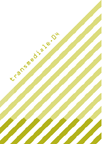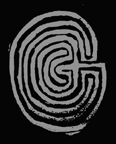:: Sunday, April 25, 2004 ::

ORIGINAL POST: Mon Apr 12, 04:05:08 AM
BY: Garrett Lynch
Je suis à paris en ce moment et la semaine dernière j'ai été informé par Andreas Broeckmann sur le mailing spectre qui il y a pas mal de choses interresantes à aller voir. Deux choses qui n'etaient pas incluses dans son itinéraire long et très bien sont les suivantes...
"Avril.dot est la seconde édition du festival consacré aux cultures électroniques et numériques, qui se déroulera à Confluences du 8 au 24 avril 2004." Cette année, le festival presente "STEPHAN MATHIEU, TAYLOR DEUPREE, MITCHELL AKIYAMA, DOUGLAS BENFORD, JASON KAHN, GREG DAVIS, MOU LIPS !, VINCENT EPPLAY, DORINE_MURAILLE, MINIFER, FABRIQUEDECOULEURS, O.LAMM, FREDERIC NOGRAY, HERVE BOGHOSSIAN, GROUPGRIS, HYPO pour des concerts hétéroclites, SASCII (Dokidoki) pour les ambiances musicales mixées, et FIGURE C pour une expérimentation vidéo-hertzienne." Dans le Gallerie, il y a des "installations sonores et visuelles de GAEL ANGELIS, METALOGUE CORP, DAVIDE BALULA, IBRAHIM QURAISHI, et SEBASTIEN ROUX". Voir le site pour le complet programme.
Le Palais de Tokyo fait un expo / projet en ce moment s'appelle Playlist. Dans le cadre cette expo Samedi prochain (17/04/04) Daphné Blouet propose une visite guidée thématique de l'expo sous le concept - Réseaux, cybernétique : l'artiste comme moteur de recherche.

ORIGINAL POST: Tue Apr 13, 03:06:21 AM
BY: Peter Luining
Somehow, everybody seems to misunderstand the revolutionary phase the net is going through at the moment. March 1st of this year, a series of new characters were introduced that were impossible to use in the address field of a browser or in an email address. The result of this introduction will be a totally fragmented internet, since the standard US/English qwerty keyboard just doesn't support these characters, like for example: ñ, ü or å. So, it will become quite difficult to get access to Spanish, Swedish, German, etc. forums just because you don't have the right characters at hand. Browsers that already support the new characters are the latest version of Mozilla and Safari 1.2 (for Mac); for MSIE (pc), a plugin will be downloaded if you get to a URL that uses the new characters. Support of all these characters will be standard in the next version of Windows (Longhorn). Read more about this change at IDN.org site.

ORIGINAL POST: Mon Apr 19, 02:32:30 AM
BY: Eduardo Navas
How far can hypertext go these days? Well, if we consider Shockwave a legitimate tool for the genre, then a long way. Anton Soderman develops text-based pieces that no longer fit the usual hyperlink aesthetic. Instead, his work redefines the computer screen as a space where abstract narratives depend on sound and movement. Unlike much online material created these days that are dependent on film language, however, Soderman's work uses the language of printed media. In many ways it is reminiscent of the early layout explorations by Mallarme, who became famous for promoting the random placement of words on the page as a way to create poems.
Soderman currently has three projects online that I strongly recommend. First is "Toward a Circulation of the Page," which, as the title implies, consists of a circular movement around quotes; this piece is accompanied by a smooth melody. "Waveland" is perhaps the least interesting of the three pieces. It consists of a set of words at the top spelling "land" and another set of words spelling "wave" moving up from the bottom. When the moving text (from the bottom) hits the words at the top, a sound much like the crash of waves is heard. Next is "Caught Released." Like "Waveland," this piece presents text at the top and bottom of the screen that say "Caught in Themes Released by Time;" the letters move at random and at different speeds, eventually deforming the sentences. If the user mouses over the top or bottom, the letters proceed to move up or down, depending on their original placement. This piece is the most visually appealing of the three, and it is perhaps the most effective extension of Mallarme's aesthetic, if we want to keep him in mind as the forefather of experimental layouts.
To experience the hypertexts, log on and click on the link for "Hypertext."